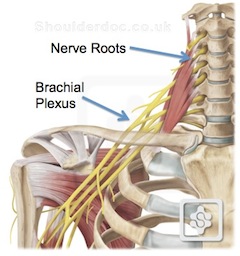Civil War of Medicine: East vs. West
Many things have changed throughout history and medicine is one of these. Through technical and chemical advances we have stumbled upon many ways to treat conditions that we didn't even know about hundreds of years ago. However, modern medicine is still the small child of traditional eastern medicine. There are many arguments about which kind of medicine is "right" and which is "wrong". I will tell you my opinion on medicine at the end of this article but first lets explore the main differences between the two.
The first documented form of eastern medicine was 5,000 years ago, however it was probably in effect undocumented long before that. Ancient herbalists experimented with mixing leaves and roots to achieve the "perfect state". Eastern medicine focuses on using whole foods to nourish the body and create a "self-healing" experience. This is not far fetched, as our body is designed to repair and heal itself from something as small as a cut or scrape all the way to cancer. However for this to occur it must be under a "perfect state". In eastern medicine the body is examined as a whole, each part connected to the rest and each body part falling under an element. Fire, Wood, Water, Metal, or Earth. It is also in the balance of Yin and Yang. These are not mystical elements as many people think they are. They simply represent the blood and the energy. ( Imagine when they were first discovering these things. They had no idea what they were so they just named them Yin and Yang!) Eastern medicine works very quickly, usually only needing 3 to 6 treatments for minor dysfunctions and 3-6 months for major diseases. It is also very cheap, as it doesn't require many tests or machines.

Western medicine blossomed in the 19th century after WW2. Although Greeks and Romans experimented with this approach the second world war marked the start of significant synthetic drugs usage. The western examination separates the body into different sections. If you have a hard time breathing, it must be due to something in your chest. They separate the body under the assumption that a dysfunction is quarantined in one area. In western medicine our Yin and Yang are the equivalent of anatomy and physiology. In this view these areas must be balanced for us to reach the "perfect state". Western medicine has a tendency to take much longer in the cure for simple and complex problems. Many treatments are carried out over several years or even a lifetime. These treatments are also shown to be much more expensive.

So which one is right and which is wrong? Neither. Just as our bodies need to be balanced, the same is true for our medical system. The emergency medicine provided by western medicine is unmatched by eastern medicine. When your body does unforeseen things, it's good to have a medical system that can save lives very quickly. However it has become a problem that people are seeking this emergency help for non-emergency problems. Several dysfunctions can be fixed in a few months with the help of eastern medicine. 2.5 million unnecessary surgical procedures are done each year. 700 billion dollars of unnecessary test are done in the US annually.
There is such a balance and slowly our society is reaching it. Here are some tips to help you find this balance.
Tip 1: Know what you are putting in!
Doctors can prescribe many things to help cover up a problem. From pain pills to suppressants they can put anything in your body to give the illusion that you feel better. Ask your doctor, what is this? What does it do? What are the side effects? Is it worth the risk of these side effects? Are there alternatives? By asking these questions you can decide for yourself if you are willing to put this into your body despite the negative effects. Just because it is prescribed does not mean you have to take it! You can choose to look for alternative answers from someone else!


Tip 2: Seek outside help.
If you are experiencing a non-emergency problem seek out help from a chiropractor, massage therapist, or Eastern medicine doctor. We know our scope of practice and if we can't help we will tell you. However you may find yourself feeling a lot better for a lot cheaper if you seek alternative medicine first.

Tip 3: Respect your body
Your body is a wonderful machine that is self healing. You must provide it essential conditions for it to he in a healing state. Proper exercise, diet, and relaxation are required to help your body heal itself.

Feel free to comment below!


 .
.








